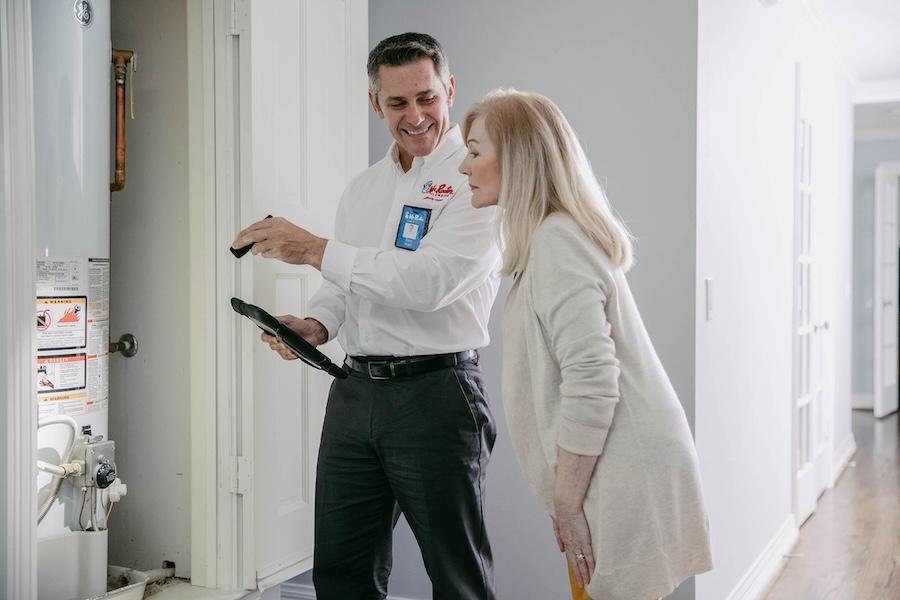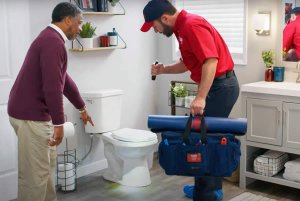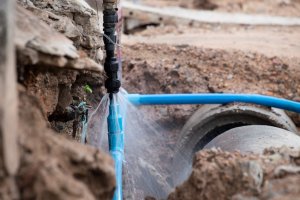Call This Tuesday to Get $50 Off

Local Emergency Plumbers in Fort Worth
Call This Tuesday to Get $50 Off

Local Emergency Plumbers in Fort Worth

Draining your hot water heater might be something you think about only sometimes, but keeping it running smoothly is essential. Over time, sediment and minerals from the water build-up inside your water heater. Draining the tank helps to flush out these deposits, making your water heater more efficient and extending its life. This guide by Mr. Rooter Plumbing will walk you through how to safely drain your hot water heater. Calling a plumber is always a good idea if you're uncomfortable with the process. They can ensure the job is done right without causing any damage.
Sediment, like calcium and magnesium, builds up at the bottom of your hot water heater tank over time. This sediment can make your water heater work harder to heat the water, leading to higher energy bills. Sometimes, the sediment buildup can cause your water heater to overheat and eventually fail. That’s when you may need to contact a water heater repair professional.
Draining your water heater removes sediment and helps prevent future issues. It’s recommended that you drain your water heater about once a year. If you’re unsure or have had problems with your heater, you may want to call a plumbing service for advice about your model and water quality.
Before you start, ensure you have the right tools for the job. Here’s what you’ll need:
These are essential tools, but depending on the condition of your water heater, you may also need additional equipment. If you run into trouble or need more confidence, a plumbing repair service is just a call away.
Before you do anything, turn off the power to your water heater. If you have an electric water heater, flip the breaker switch for the heater in your home’s breaker box. If you have a gas water heater, turn the gas control knob to the “pilot” position. If you're unsure how to do this, don’t hesitate to call a plumber in Grand Prairie. A plumbing repair service can help with the process and ensure everything is done safely.
Next, locate the cold water valve at the top of the water heater. This valve controls the flow of water into the tank. Turn the valve to the “off” position. This step prevents more water from entering the tank while draining it.
You'll find a drain valve at the bottom of the water heater. Attach one end of a garden hose to this valve. The other end of the hose should lead to a floor drain outside or into a large bucket. Ensure the hose is securely attached to the valve so water doesn’t spill out.
Once the hose is connected, open the drain valve. Depending on how much sediment is built up, the water may flow out slowly at first. It’s normal for the water to be cloudy or dirty as the sediment flushes out. You can open a hot water faucet in the house to allow air to flow into the tank, which helps the water drain more quickly.
Once the tank is empty, primarily, briefly turn the cold water valve back on to flush out any remaining sediment at the bottom. The water will help push out the last bits of debris. If you have a lot of buildup, repeat this process a few times.
After you’re satisfied that all the sediment has been removed, close the drain valve and disconnect the hose. Turn the cold water valve back on to refill the tank. Leave a hot water faucet open in your home while the tank refills to allow any air trapped in the lines to escape.
Once the tank is full and water flows from your faucet without air, you can turn the power back on to your water heater. For electric models, flip the breaker switch. For gas models, turn the gas control knob back to the “on” position. Your water heater will begin heating water again.
While draining your hot water heater is something you can do on your own, sometimes it’s best to call a professional plumbing service. If you notice any leaks, have trouble closing the drain valve, or if the water doesn’t heat up after refilling the tank, contact a plumbing repair service. These issues could indicate a more severe problem with your water heater, which may require a water heater repair.
In addition, if you're uncomfortable working with gas or electricity or the process feels too complicated, it’s always wise to call a plumber. A qualified plumber or plumbing repair service can quickly handle the task, and you’ll have peace of mind knowing the job was done safely and correctly.
Draining your hot water heater is a simple but essential maintenance task. Removing sediment from the tank can help extend the life of your water heater and keep it working efficiently. However, if you run into any trouble or feel unsure at any step, don’t hesitate to contact a plumbing service. A professional plumber or plumbing repair service can save you time, prevent damage, and ensure your water heater runs smoothly for years.

Installing a toilet might seem like an easy DIY job, but it’s a lot trickier…
Read More
Apr 16, 2025

Have you ever heard water dripping at night and thought, “Uh-oh, that can’t be good”?…
Read More
Apr 09, 2025

Water heaters are one of those things most people don’t think about until something goes…
Read More
Apr 01, 2025
.jpg)
Have you ever seen water dripping from under your sink or noticed a wet spot…
Read More
Mar 29, 2025
Schedule Emergency Plumbing Repair Services